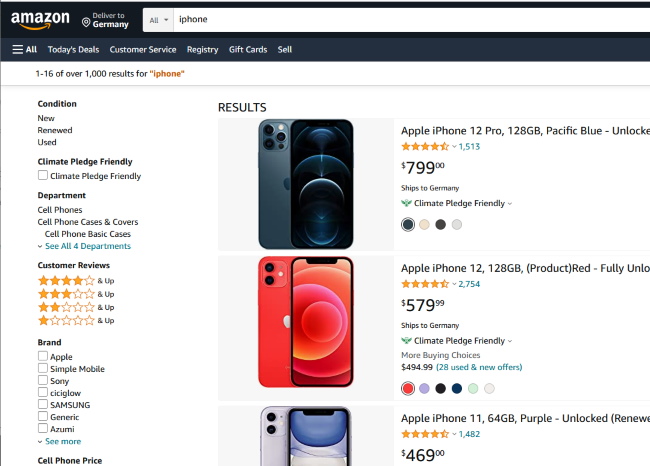According to the reports published by Statista, Amazon generated net sales of 56.6 billion USD during the fourth quarter of 2019, up from 51.04 billion USD in its preceding quarter.
In 2018, Amazon.com generated total revenue of 178 billion USD, making it the biggest eCommerce platform in the US (Source Feedvisor)
With this data, it is quite evident that Amazon will continue to grow, create bigger opportunities for eSellers. So, the higher the number of sellers, the higher the competition.
Hence, for an Amazon seller, it is crucial to understand how to create a product listing that can derive more traffic and convert better.
It is even more crucial as an e-seller to comprehend what other sellers are doing on the Amazon marketplace.
Doing this will help them learn to acquire more visibility, identify the room for improvement & development, practices, unveil tricks and tools that competitors are using to perform better.
On that note, let’s learn in-depth about how to create Amazon product listings so that they have higher conversions.
Few questions that can help you understand better!

1. How to list products on Amazon?
To sell a product, you must first create an Amazon product listing. Either match an existing listing or create a new one.
The specific way Amazon merchants upload and list their products depends on their selling plan. To explain it better: Merchants using a professional seller account can list their products in large batches using bulk inventory management, while Individual sellers can list products one at a time.
2. What do you need to start Amazon Product listing?
Generally, products have a Global Trade Item Number (GTIN), such as an ISBN, a UPC, or EAN. These product IDs are used by Amazon to identify the exact item you are selling. If your product matches a listing, you don’t need to provide a product GTIN as it already exists. But, if you’re adding a product that’s new to Amazon, you need to purchase a UPC or request for an exemption.
In addition to product identification, here’s some of the crucial information that goes into each product listing:
- SKU
- Product Title
- Product Description & Bullet Points
- Product Images
- Search Terms & Relevant Keywords
PERFECT LISTING = PERFECT LAUNCH
Following best practices for Amazon product listing can have a significant impact on their success. Make it easy for customers to find your products by adding descriptive titles, clear product images, and concise feature to your item.
Avoid these mistakes as they can negatively impact your launch:
- Image Compliance: Your product image must be 500 x 500 pixels, and you can increase it by 1000 x 1000 pixels for high-quality listing. Make sure you set it against the white background.
Also, keep in mind that your product should fill the image area at least 80%.
- Product Ids: Make sure you meet the requirement for product GTINs (Global Trade Item Number). Consistency in product IDs helps promote confidence in the range of the products shown in the Amazon catalog.
- Variation Issue: Products that vary by color or size might be an excellent option for listing as variations. If the customer would expect to find the variants together, list them on the same page. If not, list them separately.
Now, the next thing that comes in the Amazon product listing is:
The Product Detail Page
An Amazon detail page is where customers view the sold product. If you’ve ever shopped on Amazon, you’ll quickly recognize the product detail page. It’s a page where customers can find all the relevant information about a particular product.
When multiple sellers offer similar products, Amazon combines all the offers into one product detail page so that to present customers with the best experience.
As you’re building your Amazon product detail pages, try to analyze what will best help customers find your products, solutions to their doubts, and making a purchasing decision. Set the goal of ultimate customer experience by making your listing concise, relevant, accurate, and easy to understand.
Below are some points that can help your product listing stand out:
- Make sure that the size of the product images are at least 500 x 500 pixels and boost the capacity to 1000 x 1000 pixels to increase the quality of the product listing.
- The title of the product – Use 50 characters maximum, and capitalize the first letter of every word.
- The product description – It can be optimized for search engines using keywords to improve the reach of your Amazon product listing.
- The bullet point description – It should be crisp and short, descriptive sentences highlighting the key features of the product and differentiating characteristics.
- Variations of the Product – It may include different colors, shades, and sizes. Group them on one page.
- The feature offers – It is the section of the product page where customers can add items to their cart or ‘Buy now.’ If you are one of the multiple sellers promoting the same product, look out for strategies for winning the feature offer to improve your overall sales.
3. Where to find Amazon product listing services?
To appear on Amazon with 100’s of competitors around, one needs a professional approach and a splendid profile and a comprehensive listing of the products. QuikTek Info may help you gain a perfect exposure and increase customer base with quality-driven Amazon data upload services.
Conclusion
Clean and crisp Amazon product listing is something which can’t be easily done, you can take the help of competitors’ listing, but still, you need to invest in your precious time to stand out your Amazon product listing from others. Need any assistance with your product listing?
Amazon Product Listings - The Ultimate Guide,




